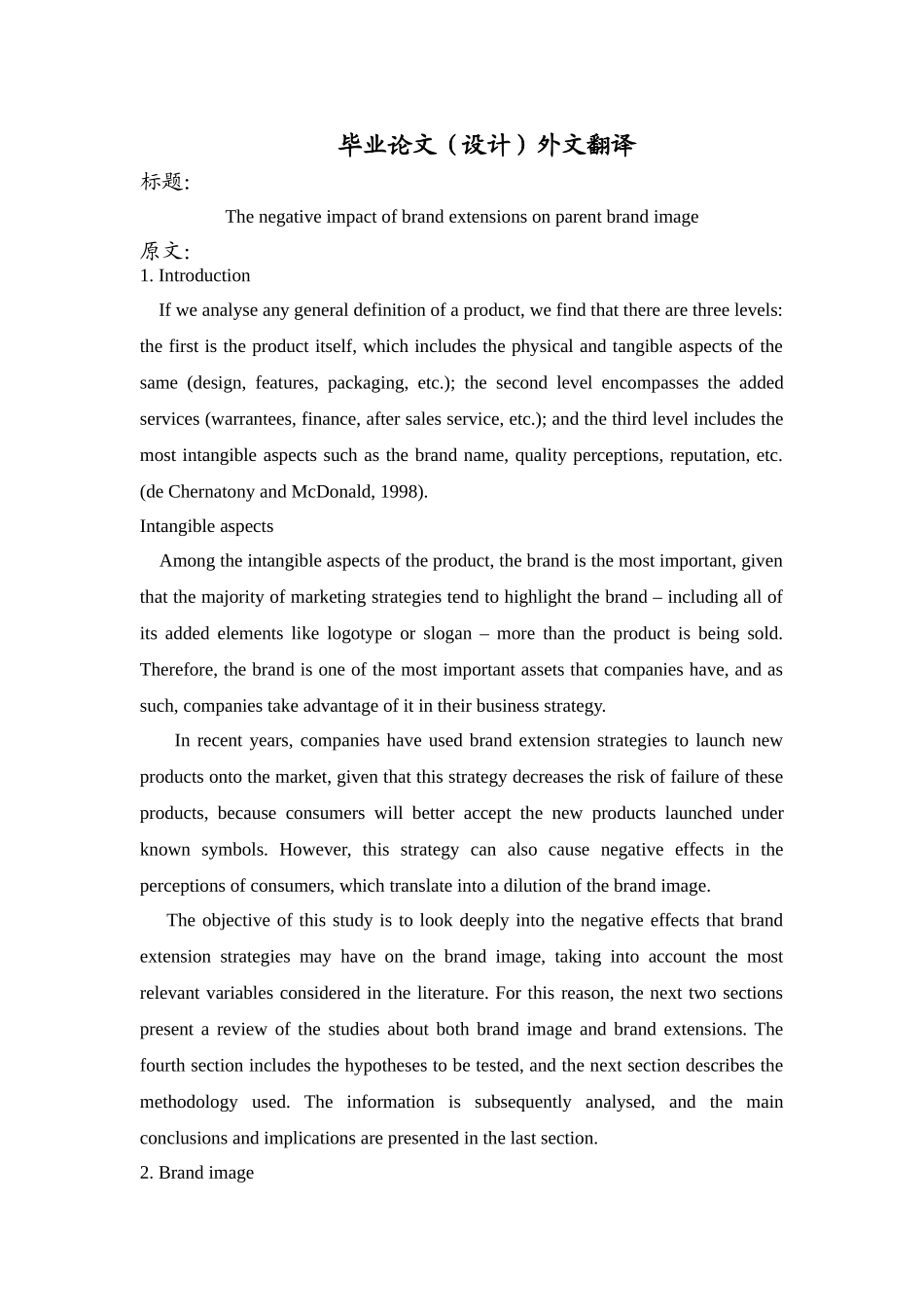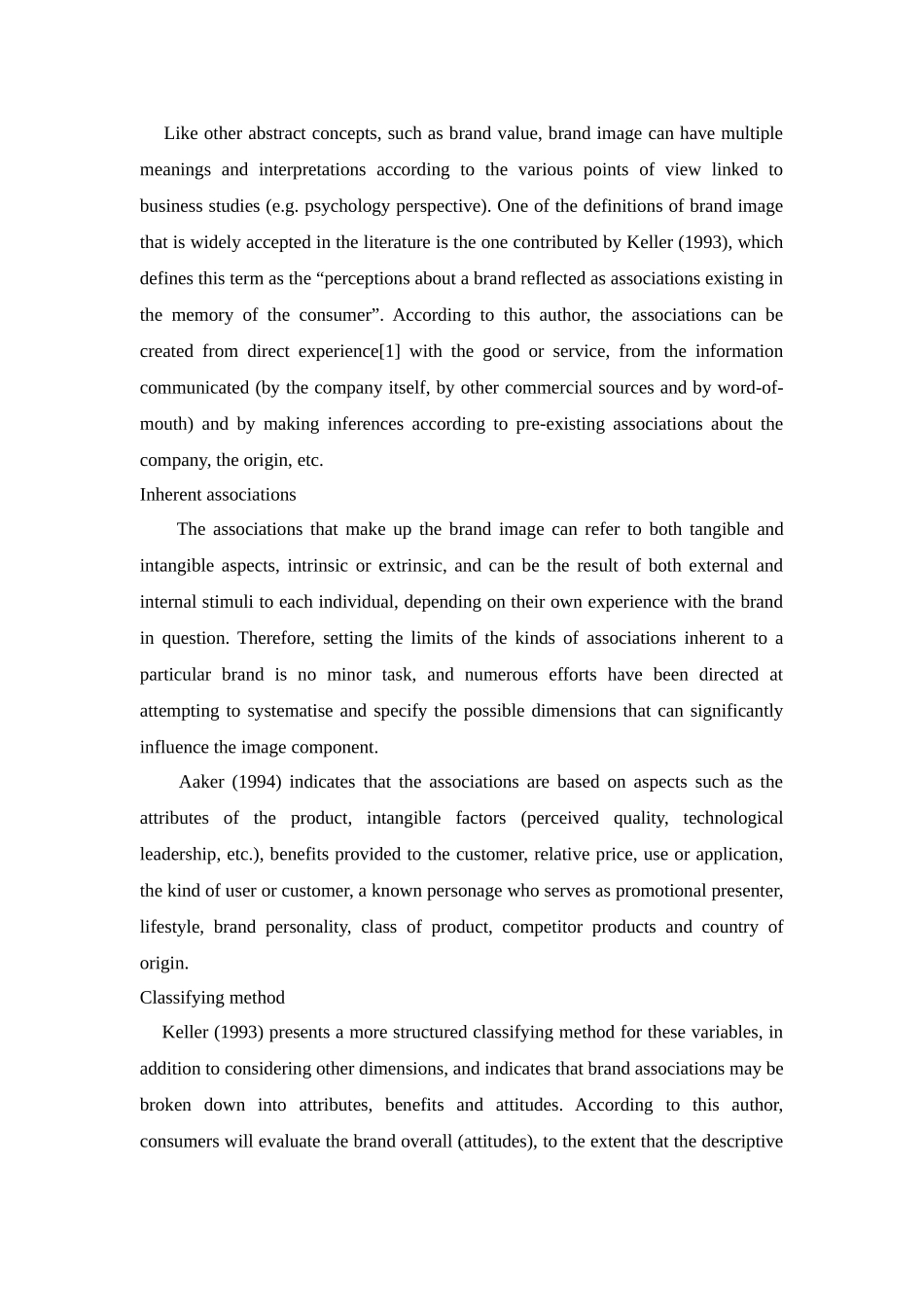毕业论文(设计)外文翻译标题: The negative impact of brand extensions on parent brand image原文:1. Introduction If we analyse any general definition of a product, we find that there are three levels: the first is the product itself, which includes the physical and tangible aspects of the same (design, features, packaging, etc.); the second level encompasses the added services (warrantees, finance, after sales service, etc.); and the third level includes the most intangible aspects such as the brand name, quality perceptions, reputation, etc. (de Chernatony and McDonald, 1998).Intangible aspects Among the intangible aspects of the product, the brand is the most important, given that the majority of marketing strategies tend to highlight the brand – including all of its added elements like logotype or slogan – more than the product is being sold. Therefore, the brand is one of the most important assets that companies have, and as such, companies take advantage of it in their business strategy. In recent years, companies have used brand extension strategies to launch new products onto the market, given that this strategy decreases the risk of failure of these products, because consumers will better accept the new products launched under known symbols. However, this strategy can also cause negative effects in the perceptions of consumers, which translate into a dilution of the brand image. The objective of this study is to look deeply into the negative effects that brand extension strategies may have on the brand image, taking into account the most relevant variables considered in the literature. For this reason, the next two sections present a review of the studies about both brand image and brand ...


